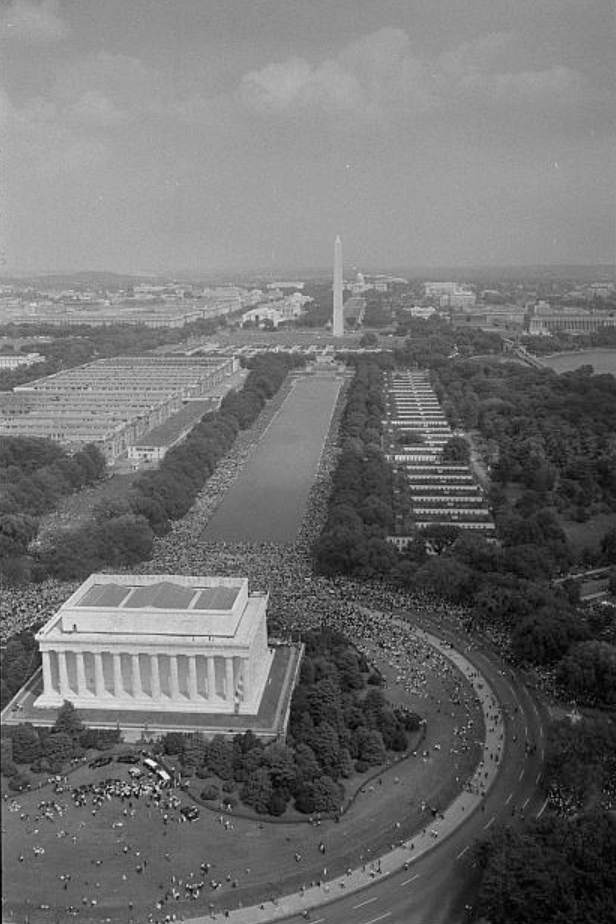Teach This Poem is a weekly series featuring a poem from our online poetry collection, accompanied by interdisciplinary resources and activities designed to help K-12 teachers quickly and easily bring poetry into the classroom.
The following activities and questions are designed to help your students use their noticing skills to move through the poem and develop their thinking about its meaning with confidence, using what they’ve noticed as evidence for their interpretations. Read more about the framework upon which these activities are based.
- Warm-up (pair share): What are some famous marches or protests that you know about? Why did these marches happen? (Teachers, if you anticipate that your students will need more background, consider providing them with a list of famous marches such as the March on Washington, Selma to Montgomery, Climate March, Women’s March, March for Our Lives, etc., and asking why these specific marches occurred.)
- Before Reading the Poem (noticing and pair share): Look carefully at the image of the photograph “Aerial View of the Marchers” from the 1963 March on Washington, where Doctor Martin Luther King Jr. delivered the famous “I Have A Dream” speech. What do you notice first? Look again. What else do you see? (Teachers, you may wish to show this animated video of King’s speech prior to or after your students read the poem.)
- Reading the Poem: Read the poem “Crossing” by Jericho Brown silently. What do you notice about the poem? Annotate for any words or phrases that stand out to you or any questions you might have.
- Listening to the Poem (enlist two volunteers to read the poem aloud): Listen as the poem is read aloud twice, and write down any additional words and phrases that stand out to you. Call back the lines that you like by saying these lines aloud with your partner.
- Small-group Discussion: Share what you noticed in the poem with your partner and another pair of students. Based on the details you just shared with your small group, how might the image from the beginning of class, or your prior knowledge of Martin Luther King or the “I Have a Dream” speech, relate to the poem? How are the poem and the speech similar or different? Why?
- Whole-class Discussion: What do you think is the significance of the phrase “I don’t march. I’m the one who leaps”? What might be the difference between leaping and marching? What does this reveal about the speaker?
- Extension for Grades 7-8 (performance): Watch this video about Dr. Martin Luther King’s granddaughter, who discusses the importance of creating her own legacy. Create a poem, speech, drawing, dance, skit, etc., in which you forge your own legacy and perform your piece in front of your classmates.
- Extension for Grades 9-12: Reread the poem. Think about the final six lines and write an essay, poem, or speech that answers these questions: How and why is this speaker different? How are you different? What is your legacy? Read your piece to your classmates.
More Context for Teachers: “The legacy that I want to leave,” says Sonia Sanchez in a conversation with Major Jackson, is that “I loved you that much that I needed to jerk your head back to really see the country for what it is. And to make it better. Not just to demean this country but to say we’re much better than this. We’re much better than this. That people have struggled here in this place called America to make it a great country. And we always get so close to greatness and then we just slide back down.” Read more.

